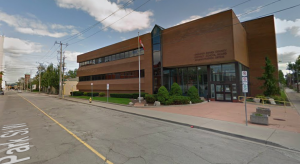
A small group of upper-level employees in a southern Ontario public school board saw a massive spike in their taxable benefits in 2017, according to an analysis of the annual Ontario Sunshine List which discloses the salaries and taxable benefits of public sector employees who earned more than $100,000 in the past year.
Seventeen employees with the Greater Essex County District School Board (GECDSB) in Windsor, Ont. received between $50,000 and $76,000 in the year in taxable benefits, 33 times more than the other employees on the list.
Out of the top 10 public sector employees who received the highest taxable benefits last year, eight of these spots are occupied by GECDSB employees. To put things into perspective, the employee from a different school board on the list who received the next highest taxable benefit sat at around $23,000.
For these 17 employees, the taxable benefits received were equal to between 26 and 33 per cent of their salary paid, according to an analysis of the data. For the remaining employees, their taxable benefits received were equal to at or below 1.2 per cent of their salary earned, the analysis also showed.

In the previous three years, all taxable benefits for employees of the GECDSB sat below a two per cent equivalency rate in relation to salary earned.
“Taxable benefits are any benefit you get as an employee by virtue of working for your employer,” explained Rebecca Renfroe, a business and taxation professor at Carleton University. “Just the fact that you work there means you get [receive this benefit] and if you didn’t work there you wouldn’t get it.”
These can range from things vehicle, parking or travel expenses to life insurance and retirement plans, she added.
According to Scott Scantlebury, public relations officer with the GECDSB, this sudden jump in taxable benefits for seventeen employees was caused by retirement plans.
Scantlebury declined an interview request, but in an emailed response he said that due to a one-time “settlement of post-retirement benefits for eligible non-bargaining unit staff” allowing “the GECDSB to eliminate a large, future, unfunded liability” taxable benefits were higher than normal.
Scantlebury said the settlement saved the school board approximately $16.7 million in future cost.
The taxable benefit was about $4.6 million, Scantlebury said, about $1 million of which appears on the 2017 Sunshine List. According to Scantlebury, the remaining $3.6 million was received by staff who do not make the list.
“The non-bargaining employees group is much larger than just senior administration,” he said. “Most staff who received this taxable benefit were not listed … as their salary does not eclipse the $100,000 threshold.”
Contributions made by employers to an employee’s registered retirement saving plans (RRSPs) are considered to be a taxable benefit, according to the Canada Revenue Agency (CRA).
Hayden Kenez, press secretary with the Treasury Board of Ontario, said in an email that a breakdown of taxable benefits is not covered within the Public Sector Salary Disclosure Act, which governs the Sunshine List.
Carleton University’s Rebecca Renfroe spoke to the importance of a publicly accessible and searchable Sunshine List.
“It’s our money, it’s transparency. I think particularly in today’s world where the trust between public institutions and the public isn’t always where it should be … it’s important things like this exist so there is some level of transparency,” she said.
According to the GECDSB’s website, the board is home to 55 elementary schools and 15 secondary schools.
The Sunshine List has been in existence since 1997 and requires all public sector organizations to make public the names, position titles, salaries and taxable benefits received by employees making over $100,000 by Mar. 31 of each year.
(A map of all elementary [blue] and high schools [red] in the Greater Essex County District School Board [GECDSB] appears below.)
